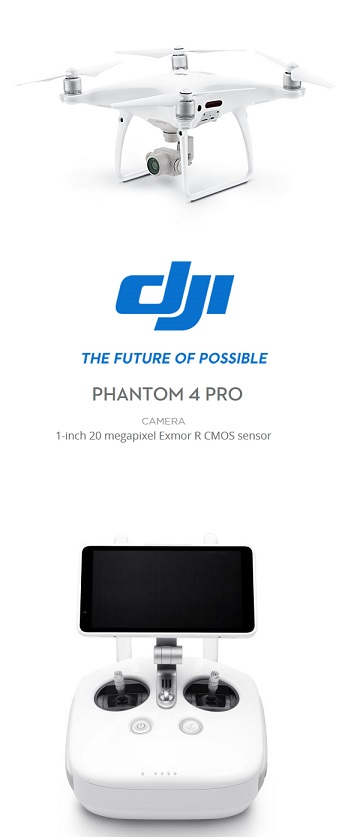
On May 8, 2018 DJI announced a modified version of the top-end fourth generation drone - Phanto m 4 Pro v2.0. Details of the details of the transformation and prices can be found here.
On August 31, 2017, at the 57th International Consumer Electronics Show IFA 2017, DJI announced an updated version of the drone - Phantom 4 Pro Obsidian. More details about the details of the transformation and prices can be found here
Introduction
On November 16, 2016 the leader in the field of UAVs DJI InnovationInspire 2 and Phantom 4 Pro. If everything is clear with the Inspire 2, from the first version it showed its true purpose in the field of cinematography and significantly closed the gap between amateur and professional photography and video filming. But the appearance of the Phantom 4 Pro was a bit puzzling, and the question immediately arose, how much it differs from its already ideal brother Phantom 4, or is it still a marketing ploy by the company?
In this review, we will not re-talk about the already known advantages of the fourth Phantom series
About the product
After unpacking, you will visually see the same Phantom 4 and you can hardly see how different it has become. The first thing that an experienced owner's eye will catch on is the presence of additional sensors on the back and sides of the drone. Then the difference in the ventilation ducts on the drone's beams will be visible, they have become a little larger, and someone will be able to see the external differences in the cameras, but you can't even imagine how much it has changed with the addition of the Pro letter.

Features
- Visual positioning in 5 directions
- 20MP camera built on 1- inch CMOS matrix
- Shooting video in 4K quality at 60 fps
- Mechanical shutter
- Added new video compression format H.265
- Increased maximum speed video stream up to 100Mbit / s
- Modified 3-axis gimbal
- Added new control equipment with a built-in super-bright 5.5-inch FHD display
- Modified LightBridge video link HD
- Increased frequency range
- Increased video transmission distance to 10 km
- Added intelligent flight modes
- Increased flight time to 30 min
A weighty set of innovations, isn't it, now about everything in order.
Positioning
Thanks to 4 built-in high-resolution stereo vision sensors (front and rear), as well as infrared object recognition on the left and right sides of the drone, the complex ultrasonic sensors in its lower part, the quad now sees both under itself and around itself at 360º.
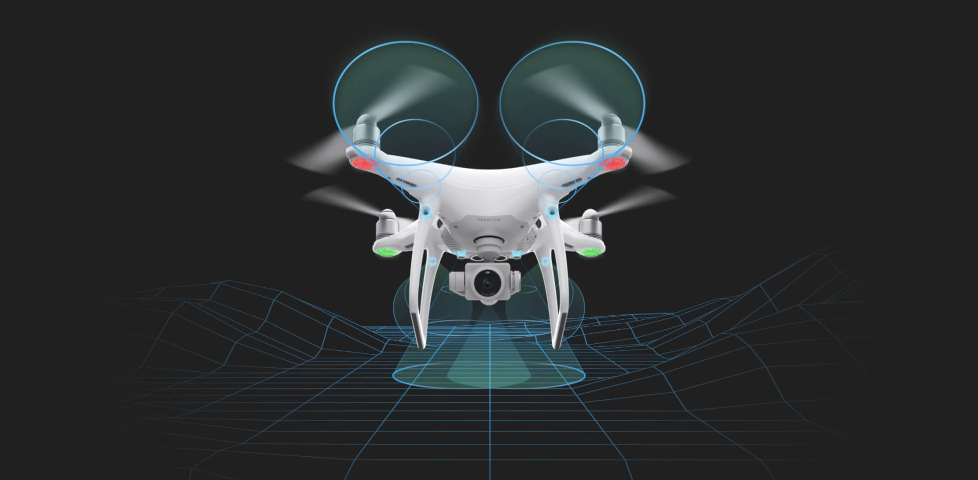
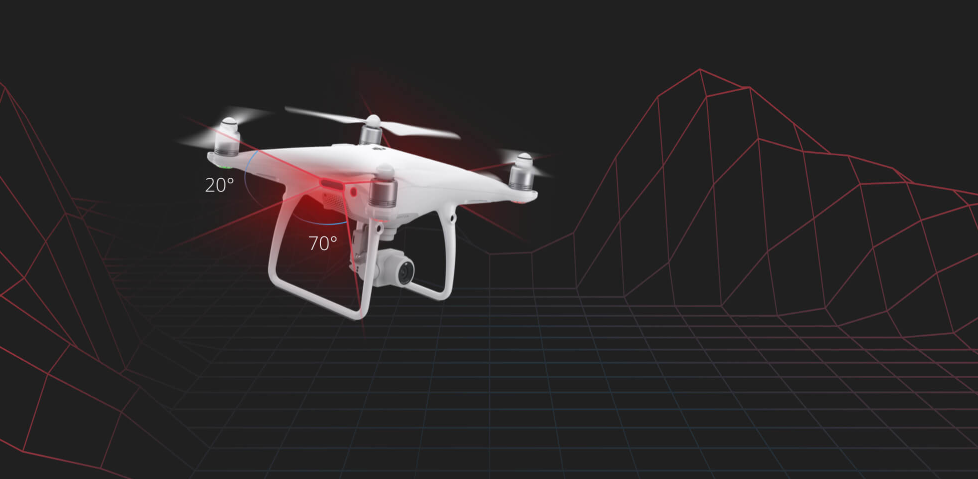
Based on the information received from all visual positioning systems, the quad is able to determine obstacles in advance (30 meters in front) and plan their flight paths. If it becomes impossible to fly around the obstacle, the drone will simply hover, preventing a collision.
Also, this whole system allows safe flight without GPS (indoors, when flying through window openings, etc.), at a maximum speed of up to 50 km / h.
All of this above imaging complex in a compartment with 2-band satellite positioning (GPS / GLONASS), with duplicating 2 × IMU sensors and 2 × compasses, is controlled by a powerful multi-core processor, which and ensures accurate, well-coordinated operation of all systems. This approach provided the drone with impressive autonomy. The Phantom 4 Pro can allow the pilot to fully immerse themselves in the world of shooting, regardless of the controls.

Camera
The size of the sensor used in the camera is a more important criterion for obtaining a quality image than the number of pixels. After all, the more the sensor can capture information, the better the dynamic range and signal-to-noise ratio will be in low light. The Phantom 4 Pro's 1-inch CMOS sensor is nearly four times the size of a Phantom 4 camera. It uses more pixels, has a maximum ISO of 12,800, and has increased contrast.

The new camera has been completely redesigned for a 1-inch 20-megapixel sensor. It features an optimized wide-angle lens (F2.8) with an equivalent focal length of 24mm. The lens consists of eight lenses (spherical and aspherical) arranged in seven groups. This approach ensures the clarity of the picture, over its entire area, eliminating any kind of aberration of the optical system.

The new camera introduces the first mechanical shutter type (max. 1/2000) to eliminate distortion when shooting at high speeds.

The electronic shutter with a maximum exposure of 1/8000 second has also been improved. The new Burst Mode now captures 20MP images at 14 frames per second. In fact, the P4 Pro has the potential of traditional handheld professional cameras.
For the first time, MTF (Modulation Transfer Function) results have been released using the P4Pro DJI Innovation camera as an example, so that people can become more familiar with the characteristics of the new lens.
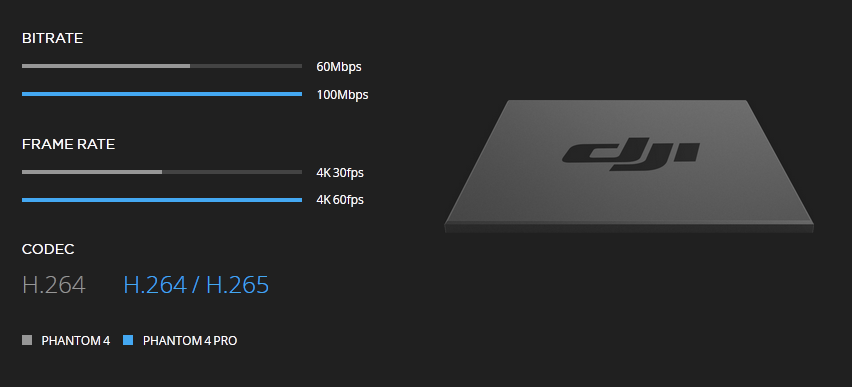
The camera supports the previous video compression format H.264, which allows you to shoot video in 4K quality at 60 fps (max.resolution 4096 × 2160 @ 60 fps), and the new H.265 with 4K quality at 30fps (max.resolution 4096 × 2160 @ 30 fps) and all this with a bitrate of 100Mbps. Supported video codec H.265 doubles the amount of image processing compared to H.264, resulting in double the image quality. Recording in high dynamic range D-Log (D-log mode) significantly optimizes and improves the quality of the material. This approach provided the camera with more detailed image capture, which in turn, at the output, made it possible to achieve the highest quality photo and video material.
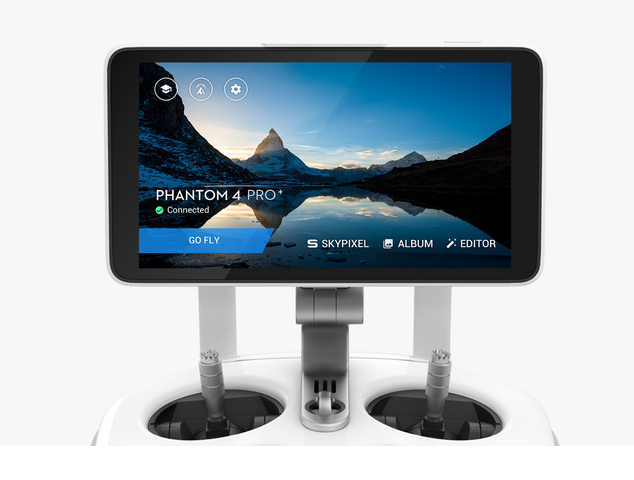
Control equipment
Typically, the drone is controlled at 2.4GHz, and the video stream is transmitted at 5.8GHz. Since the frequencies do not overlap, conflicts between channels are also eliminated. But at the same time, the use of different frequencies has its drawbacks. For example, flight performance will be affected when either of the two frequencies is interfered with.
The Phantom 4 Pro features an improved LightBridge HD video transmission system, added support for 5.8GHz data transmission. The ability to choose between frequencies eliminates interference and delays in the transmission of video streams caused by the widespread use of 2.4GHz frequency.
LightBridge HD
Digital Video Link - LightBridge HD uses the well-known TDM (Time Division Multiplexing) technology to transmit signals, which allows multiple low-speed input channels to be combined into one high-speed channel.
Since the 2.4GHz frequency is most often used by Wi-Fi routers, 4G cell towers, the appearance of the 5.8GHz frequency will significantly increase the reliability of data exchange between the equipment and the drone.
When the Phantom 4 Pro is turned on, the system evaluates the local signal levels by automatically selecting the transmit frequency with the lowest noise level. With this approach, DJI developers managed to ensure optimal operation of the equipment over the entire frequency range, and the maximum transmission range of the video stream increased to 10 km.
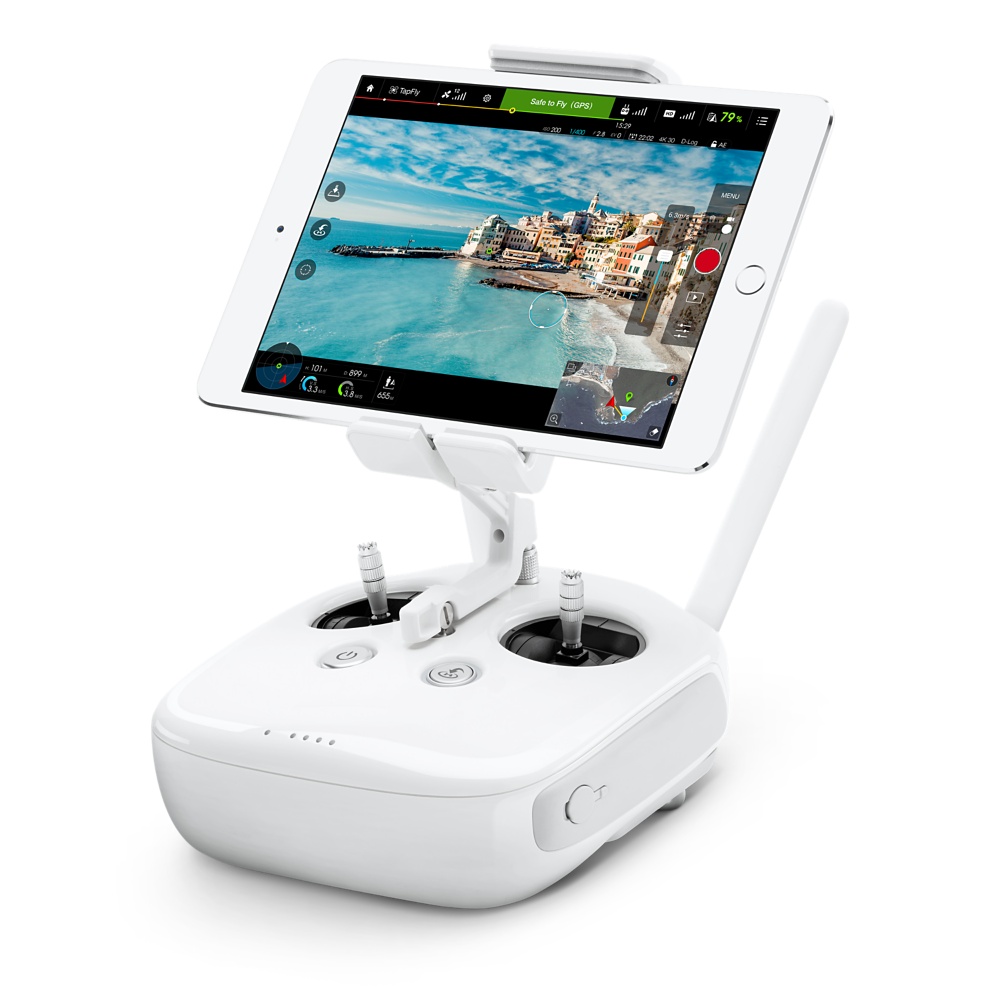
The kit may include both standard equipment and new ones with built-in FHD display. The built-in 5.5-inch (13.97cm) 1080p screen is the brightest display (1000cd / m²) in any smart device. Now the sun will not affect the display of information on the screen in any way, even in direct sunlight.
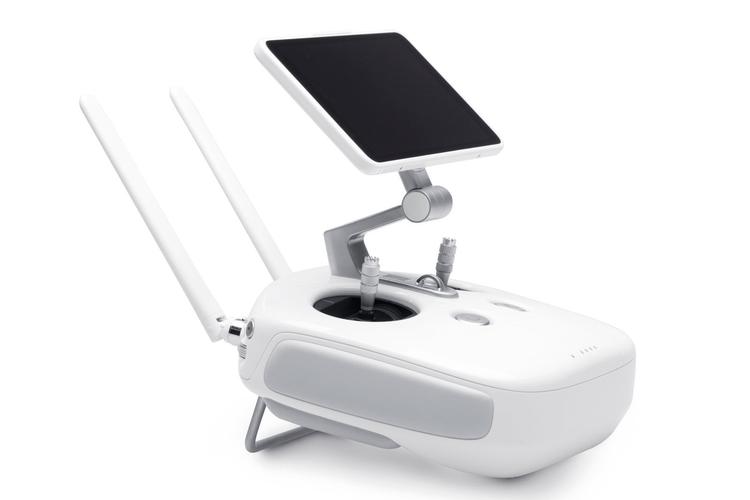
The owner of the new equipment no longer requires a mobile device to compile with the drone, which in turn reduces the pre-flight preparation time. The DJI GO app is already installed and optimized with software and hardware, and it has also reduced video lag time.
Also, the new equipment already has built-in: HDMI port, slot for MicroSD, microphone, built-in speaker, as well as via Wi-Fi, you can edit the resulting images almost instantly. Finally, the transmitter is powered for a full five hours of battery life with the Phantom 4 Pro.
Flight Modes
The Phantom 4 Pro has 5 Intelligent Flight Modes.
Draw is a completely new waypoint flight technology. Simply draw a route on the screen and the Phantom 4 Pro will follow the desired direction and altitude. This mode allows the pilot to focus on camera control and still photography in general. Draw mode implies two flight options:
- Standard - the drone flies along a given route at a constant speed, with the camera facing in the direction of flight.
- Free - the drone flies along the specified route while the camera is completely at the pilot's disposal.

ActiveTrack - mode allows the drone to automatically recognize an object, capture and follow it, which in turn makes it possible to easily obtain complex shots with his participation. Chasing a fast moving subject is no easy task, but thanks to advanced pattern recognition algorithms, the Phantom 4 Pro can easily recognize and track an object, keeping it centered throughout the flight. The new algorithm makes it possible to recognize people, vehicles, animals and at the same time adjust the flight dynamics to ensure the smoothest shots.
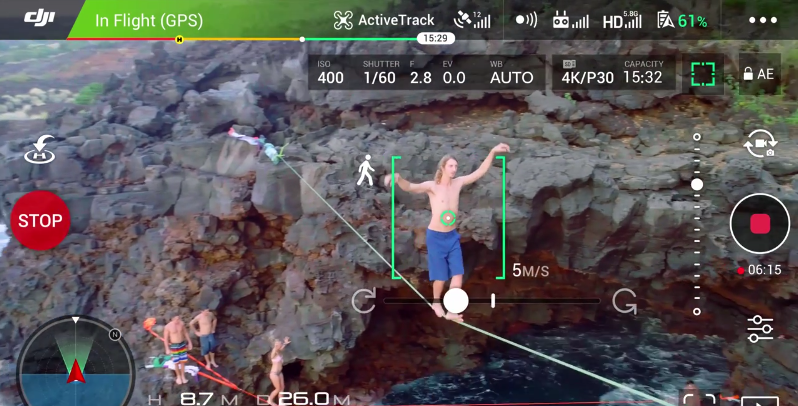
3 options for capturing the object will be available for the pilot:
- Trace - the drone follows or before object, flying around obstacles in automatic mode.
- Profile - the drone flies directly next to the object, being at different angles to obtain profile images with its participation.
- Spotlight - keeps the camera on the specified object, while the drone can fly from any angle.
TapFly - is a one-touch forward autonomous flight on the display. Click anywhere within the display where you would like the drone to fly, and then again on the "Go" icon and it will proceed to the specified location, in a forward direction overflying obstacles *. The pilot can always intervene in the flight process by touching one of the sticks.
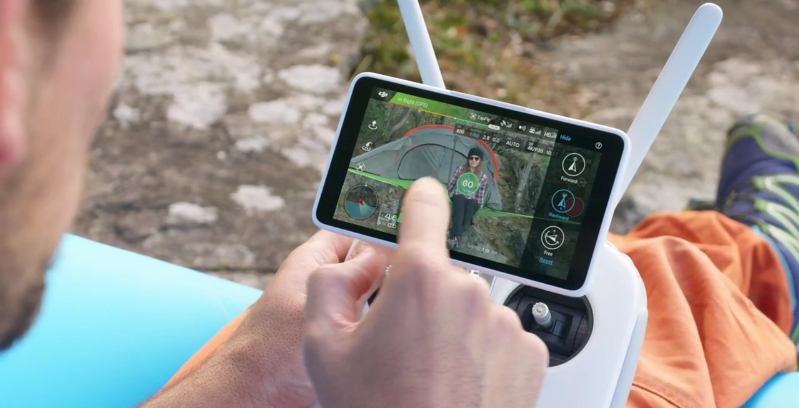
There is a new function "AR route", which shows in real time the current direction of flight of the drone, taking into account all adjustments by the pilot. In TapFly mode, the pilot focuses his attention on flight altitude, trajectory, speed and camera position using the equipment sticks.
TapFly mode has 3 options:
- TapFly Forward - for autonomous flight in the forward direction, where the camera is looking in the direction of flight.
- TapFly Backward - for forward flight autonomously when the camera is facing away from the direction of flight.
- TapFly Free - for flying in the forward direction, with this execution the drone control is blocked, but the camera can be controlled in any direction.
* The drone does not fly around obstacles when TapFly Free is active.
Return to Home - The developers have improved the mode, now the Phantom 4 Pro automatically selects the optimal return route depending on environmental conditions. While you are flying, the drone writes the current route, if the connection is lost, relying on the recorded data and avoiding obstacles, the Phantom 4 Pro will return to the take-off point and make a soft landing.

Based on the occupied altitude at the moment of loss of communication, the Phantom 4 Pro is also able to adjust the flight path to avoid obstacles that it recorded during autonomous flight.
Similarly, the Phantom 4 Pro will record the take-off location for a more accurate landing. The drone can sense the ground in order to analyze the landing site. If any obstacles are found at the landing site, for example water, the quad will warn the pilot and will hover above this place, waiting for the next commands.
Gesture Mode - Selfie mode, activated by gestures without using equipment. Advanced computer vision technology allows the Phantom 4 Pro to follow directions using gestures. Just raise your hands in front of the camera and the drone will recognize the gesture and place the subject in the center of the frame. When everything is ready for shooting, the drone will emit a warning signal. After the signal, the subject is given 3 seconds to prepare for the selfie.angular velocity control:
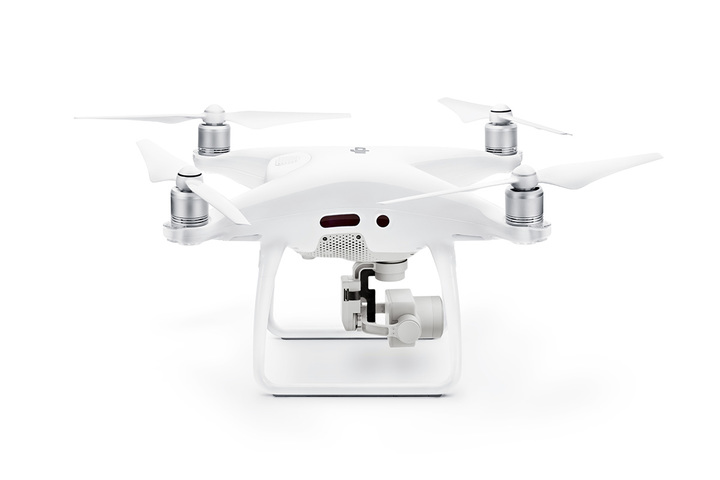
Battery
Charger
Price
Phantom 4 Pro is no longer in production. In exchange for the same price, the developer offers a modified version of the drone Phantom 4 Pro V2.0

Conclusion
DJI Innovation did a great job, the technical restyling of the Phantom 4 Pro was 100% successful. With the release of the Pro version, the gap between the closest competitors has increased several times. Why it didn’t come out right away in this configuration is not entirely clear, nevertheless, a mark of marketing is visible, whatever one may say. Professionals of photo and video filming, as well as wealthy amateurs have an excellent assistant. If the price tag is not a limitation on the purchase of such a drone, then, undoubtedly, it is better to opt for a quad with the letter Pro.
On May 8, 2018 DJI announced a modified version of the top-end fourth generation drone - Phantom 4 Pro v2.0. More details about the details of the transformation and prices can be found here.
On August 31, 2017, at the 57th International Consumer Electronics Show IFA 2017, DJI announced an updated version of the drone - Phantom 4 Pro Obsidian. More details about the details of the transformation and prices can be found here
Photos
Photos with Phantom 4 Pro.
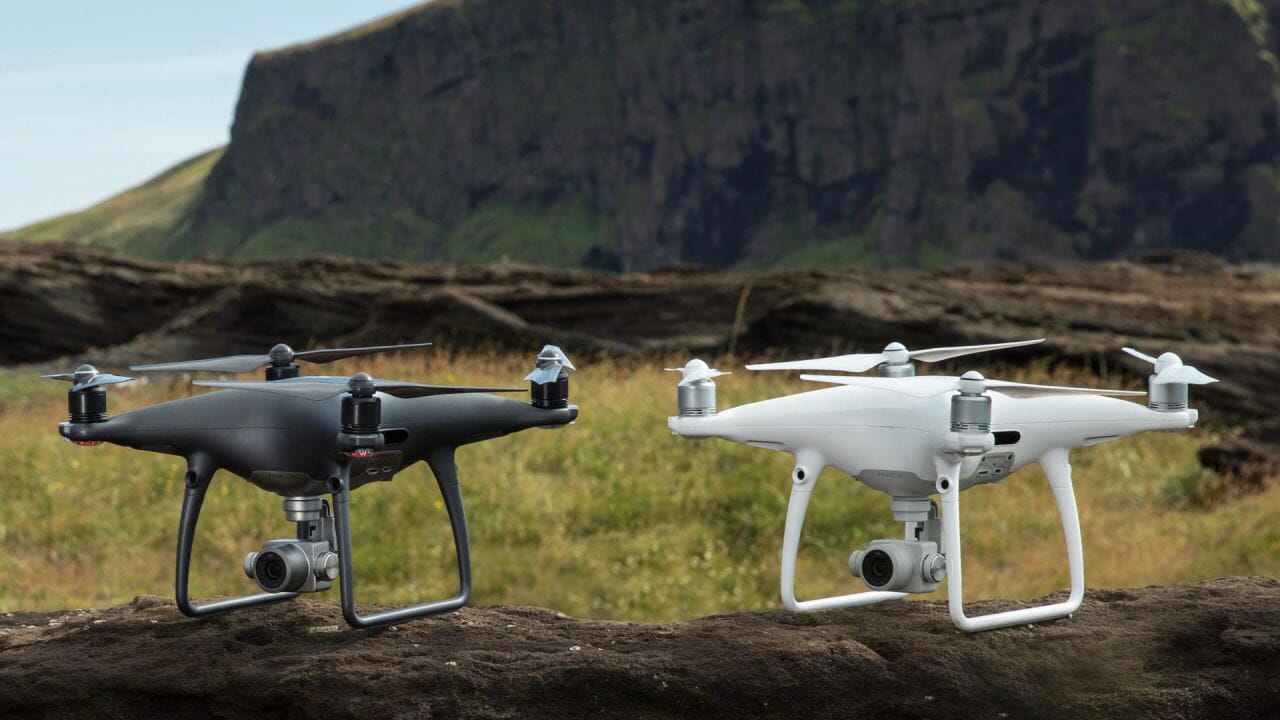
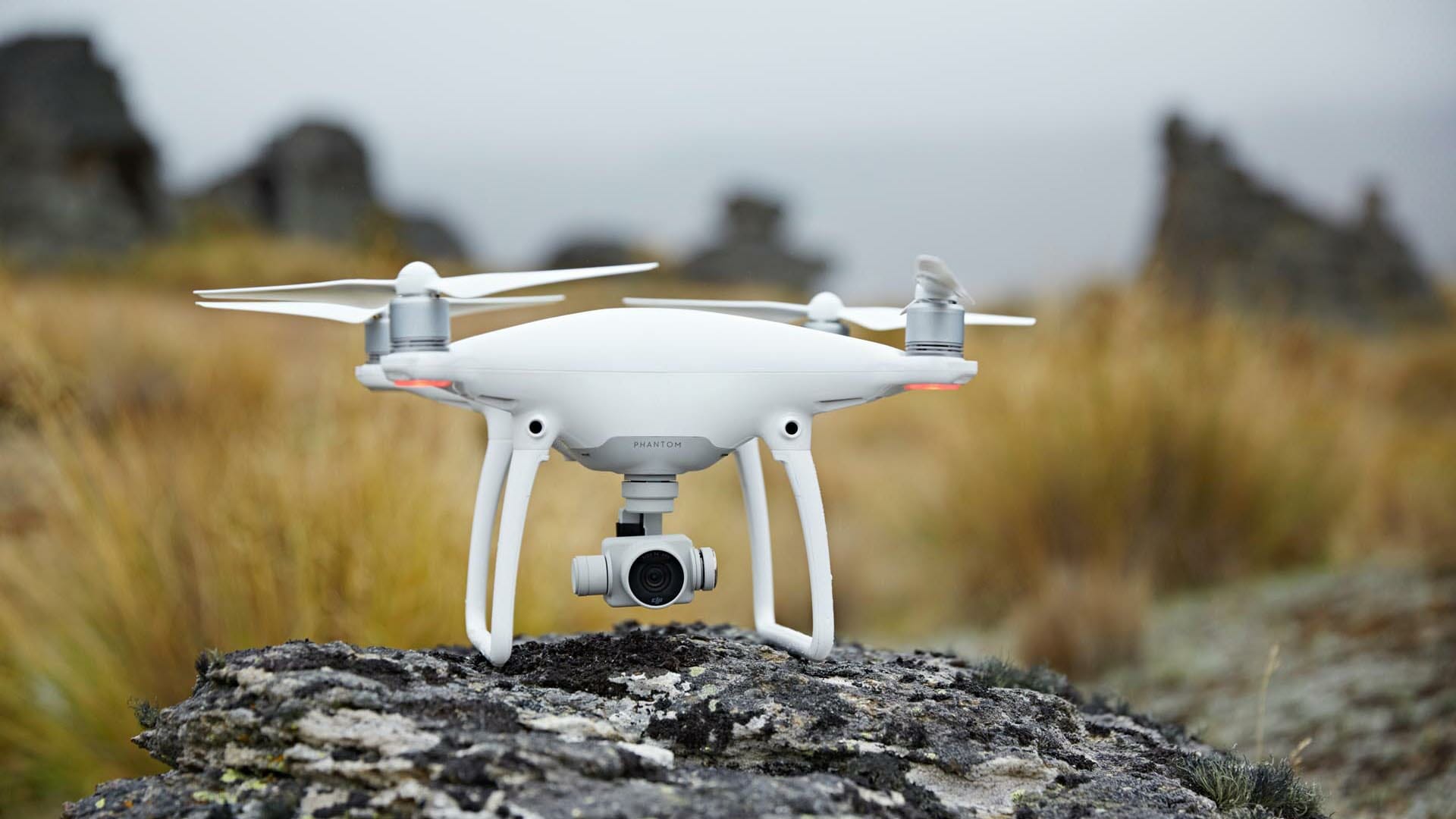

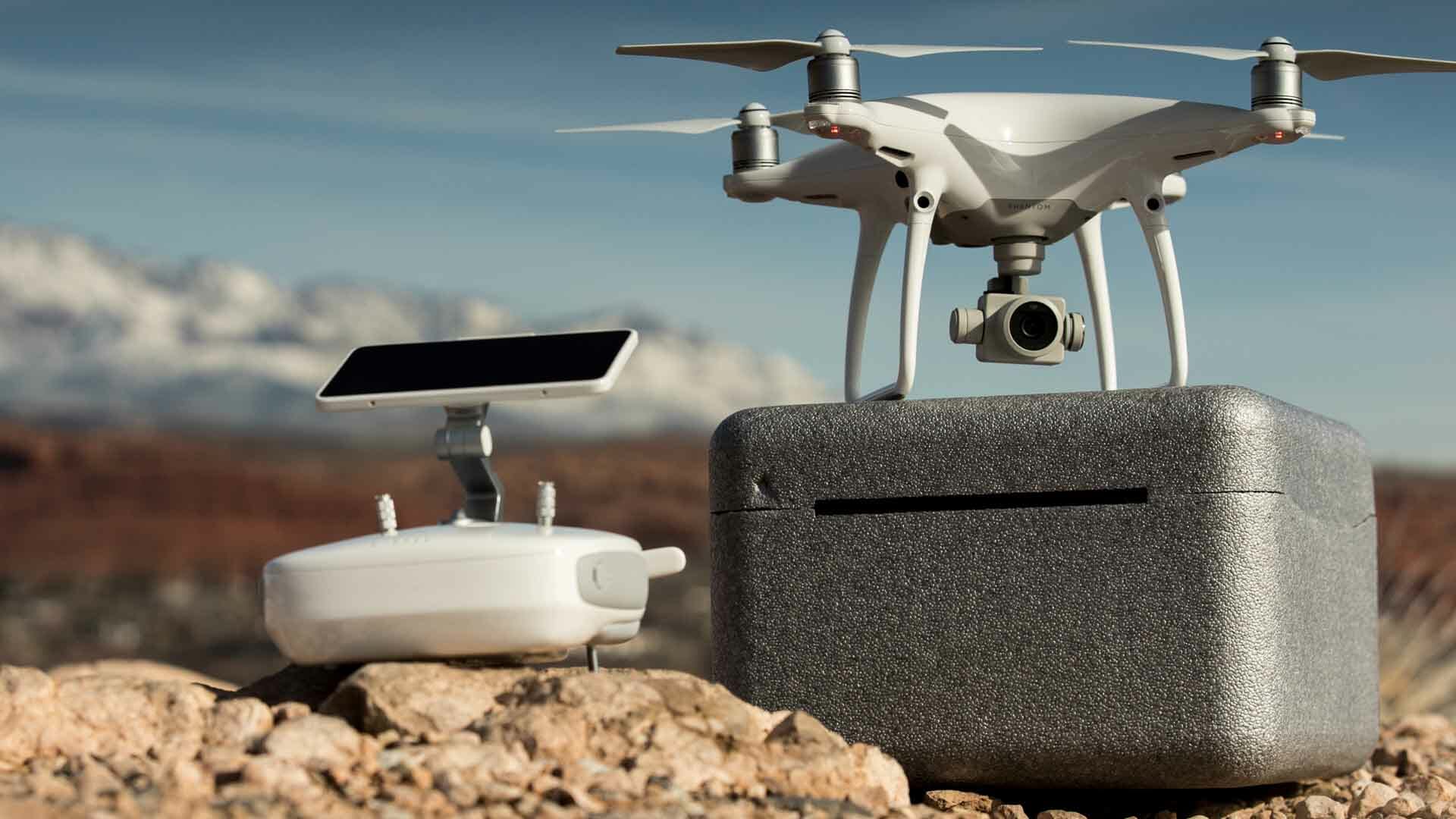
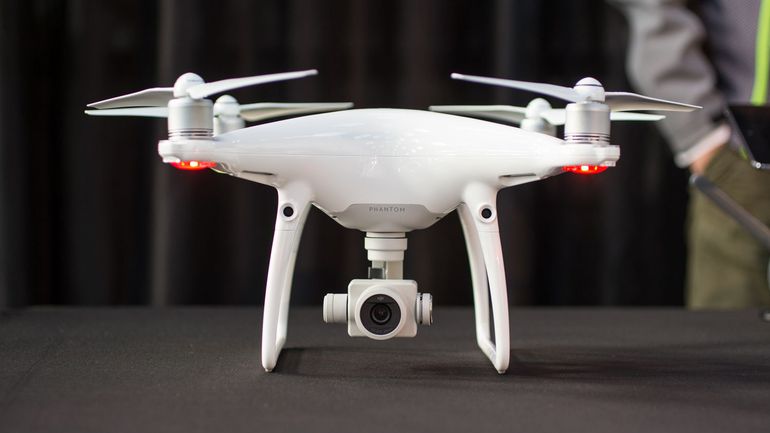
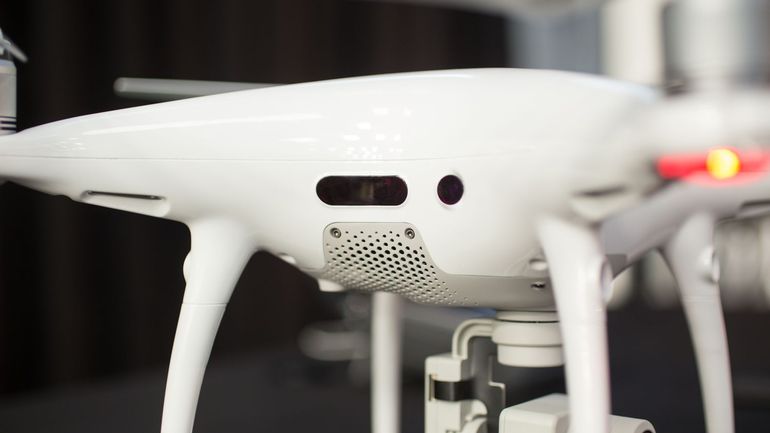
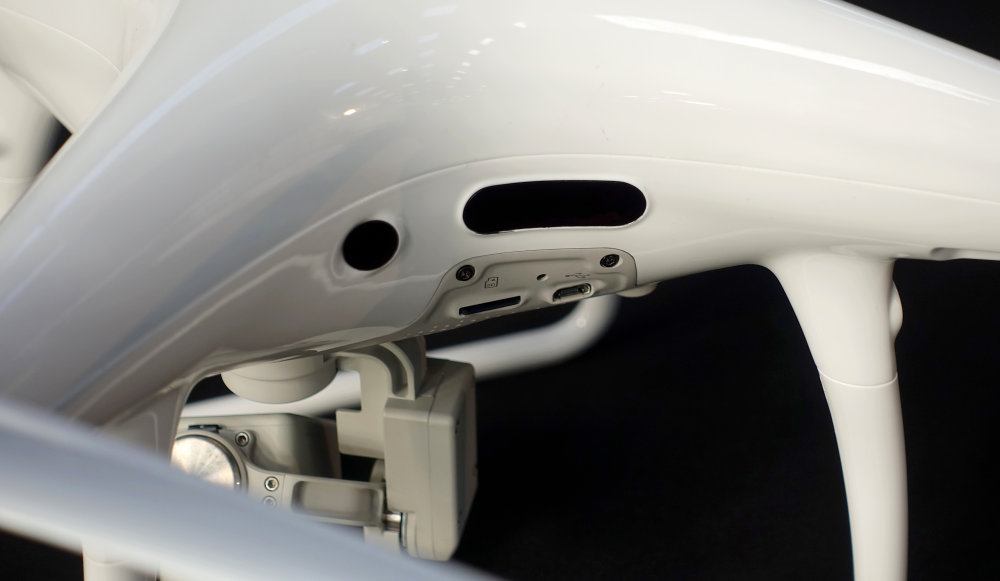
Video
Phantom 4 Pro video.
.






